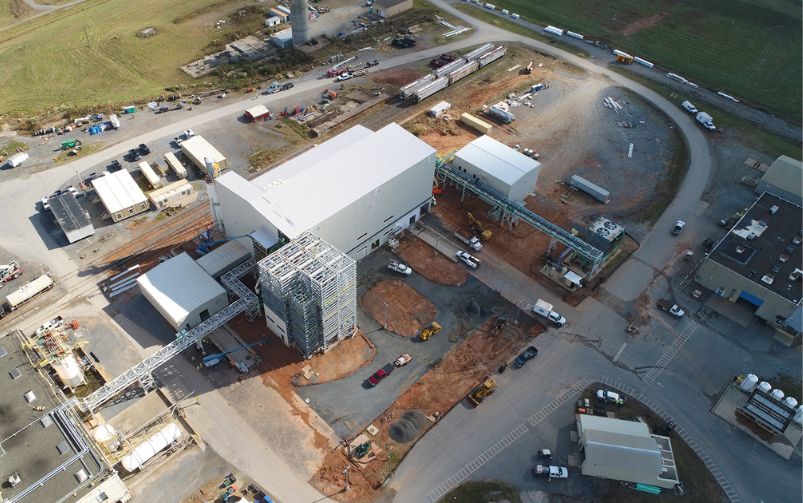Idris Elba plays a different role in a new documentary that examines the enduring significance of gold in today’s society. Courtesy of DFID – UK Department for International Development.
A new documentary commissioned by the World Gold Council (WGC), titled Gold: A Journey with Idris Elba, delves into the historical and current relevance of gold around the world. The WGC stated it created the film to help a broad audience understand the impact of gold in society. Released in October, it has already garnered more than five million views on YouTube.
“Gold has a positive impact across the lives of individuals, communities and economies, with much of the story to date left to imagination,” said David Tait, World Gold Council CEO, in a press release.
In the documentary, Idris Elba, the high-profile actor best known for his work in movies and television shows, visits countries like India, South Africa, the Democratic Republic of Congo and the United Kingdom to understand the impact that gold has had on economies, workers’ rights and the energy transition.
“Gold has the power to transform,” Elba said in the release.
Canadian Connection
Elba visited countries around the world to learn the significance of gold in different cultures. He began his journey in the Canadian city of Val d’Or, where he travelled 3.2 kilometres underground at Agnico Eagle’s LaRonde complex to see how gold ore is mined.
Guided by Pascal Larouche, the mine’s general superintendent, Elba delved into the gold production process, from the extraction of ore beneath the Earth’s surface, to refining and melting it into a $1 million gold bar.
“The area we’re on has one of the highest concentrations of gold that we have in Canada, and probably in the world,” Larouche said in the film. LaRonde produced 356,337 ounces of gold last year.
Gold is the most valuable mined commodity in Canada and in 2021, the country ranked fourth globally in gold mine production, with nearly all provinces and territories having gold mining operations, according to Natural Resources Canada.
Digging for golden stories
Gold’s symbolic significance in different cultures was highlighted in India at a wedding, where it represents not only love, but also wealth and power, and giving it as a gift is considered auspicious. In Ghana, Elba (whose mother is Ghanaian), found a personal connection with the Ashanti tribe as he participated in a ceremony held in his honour, where gold plays an essential role in showing respect and gratitude.
“In Ashanti, gold isn’t just to have gold and have money,” Elba said. “It represents a deep history.”
In South Africa, gold’s historic impact on workers was examined, as Elba was guided through the Crown Mines area in Johannesburg by Frans Belani, who was a miner during the Apartheid era.
“We were almost like slaves,” Belani said. “What they needed was your labour.”
Belani recounted 12-hour, six-day work weeks, working unpaid overtime to finish the work. Black South African miners with the National Union of Mineworkers halted operations at the Crown Mines area during a 1987 strike to call for better working conditions, with 340,000 workers demonstrating during a 21-day period, which hit back at the oppressive system.
The power of gold
In London, Sarah John, chief cashier of the Bank of England, toured Elba through its nine underground gold vaults, where countries store gold reserves for emergencies and natural disasters, proving its value as a stable currency. The Bank of England is the second largest custodian of gold in the world, preceded by the New York Federal Reserve. In the last quarter of 2023, gold prices peaked to an all-time high due to global conflicts, economic turmoil and potential U.S. interest rate cuts, with investors looking to the commodity as a safety net.
The documentary also examined how gold can be used for good. Gold operations at an AngloGold Ashanti mine in Ghana have funded the fight for malaria elimination since 2005, when the company identified malaria as the biggest threat to its productivity due to the number of workers who were infected with the disease. AngloGold Ashanti has invested US$1.5 million into its malaria control program every year since its inception in 2005, and has since adopted the program to its mine sites in other countries to reduce the rates of malaria.
In the Democratic Republic of Congo, there is a lack of power supply for mining operations in remote areas like the Kibali gold mine, which is owned jointly by Barrick Gold Corporation, AngloGold Ashanti and the Société Miniére de Kilo-Moto (SOKIMO). The film showed how a solution was found with the development of the hydroelectric dam in the Kibali river, which supplies electricity for the Kibali mine’s operations and provides energy to rural villages nearby, which is expected to extend beyond the life of mine.
“The Kibali mine has literally given power to the people,” Elba said.
Looking to the future
According to the World Gold Council, more than 200,000 tonnes of gold have already been mined; global estimates are that nearly 80 per cent of the world’s gold has already been discovered.
The film highlighted how the mining industry continues to evolve to improve working conditions and implement responsible mining practices. Most recently, the WGC, along with the Mining Association of Canada (MAC), the Copper Mark and the International Council of Mining and Metals (ICMM), announced that they would collaborate to create a new globalized standard for responsible mining.




